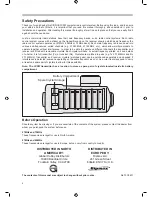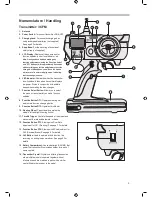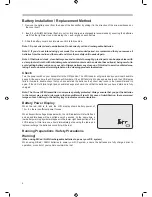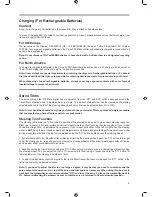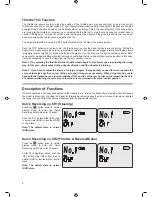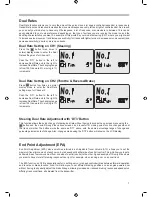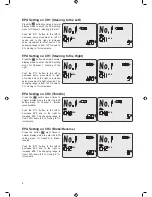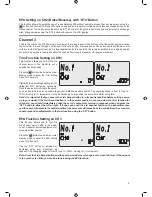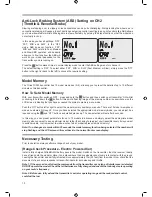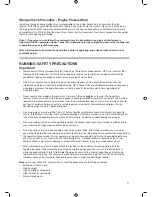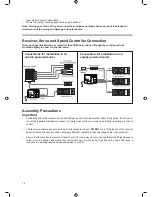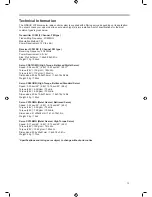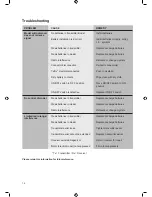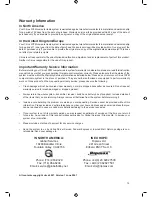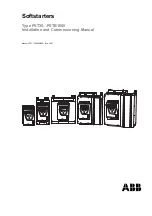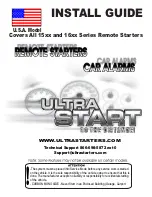
Charging (For Rechargeable Batteries)
Caution!
Never try to charge dry cell batteries in the transmitter. They will leak and could explode.
To prevent the possibility of accident, overheating and/or short circuit, always disconnect your battery charger from
its power supply when not in use.
For UK/Europe
We recommend the Ripmax P-FBC10D/4 (UK) / P-FBC10D/4EUR (Europe), Tx/Rx NiCad/Ni-MH AC Charger
70/70mA, to charge rechargeable batteries in the Cirrus 3CFM transmitter and suitable rechargeable receiver battery
packs (where applicable).
Note: Do not dispose of Ni-Cad/Ni-MH batteries in household waste, but take them to a designated recycling
centre.
For North America
To charge rechargeable batteries in the Cirrus 3CFM transmitter you will require a 9.6V charger with an output of
70mA. The charging jack centre pin must be the positive connection.
Note: Some states have special requirements concerning the disposal of rechargeable batteries. You should
first check with the State Agency responsible for recycling hazardous waste for procedures in your State!
When disposing of used rechargeable batteries, always cover any exposed contacts with some form of
insulation/tape to prevent short circuit.
Servo Trims
The servo trims on the 3CFM are digital and are adjusted from the ‘DT1’ and DT2’ buttons arranged around the
transmitter’s steering wheel. Adjustment is very simple. The amount of adjustment can be viewed on the display
screen positioned to the left of the steering wheel. Each servo trim can be adjusted from 0% to 100%.
Note: Trims should be checked every time you intend to use your model. This is a quick and simple procedure
that ensures that you have effective control over your model.
Steering Trim Function
The steering trim allows you to fine-tune the position of the steering servo so as to give correct steering response.
Place your model on a flat, level surface and drive it slowly forwards without touching the steering wheel. If your model
drives in a straight line, no adjustment is necessary. If your model pulls either to the left or right when the steering
wheel is
NOT
being turned, it needs adjustment. Adjustment is as follows and should be performed with your model
driving slowly forwards (the steering trim is adjusted using the ‘DT1’ button located above the steering wheel):
1. If your model pulls to the left without transmitter input (turning the steering wheel), push the ‘DT1’ button to the right
to trim the steering servo, re-centre your model using the steering wheel and then drive forward again without steering
and see what effect your adjustment has made.
2. Keep fine-tuning the trim in this way using the ‘DT1’ button until your model drives in a straight line without touching
the steering wheel. You can adjust the trim in 1% increments for fine-tuning, or press and hold the ‘DT1’ button for
faster adjustment if the steering is badly out of trim.
3. To adjust the trim when your model pulls to the right without transmitter input, simply push the ‘DT1’ button to the
left in the same way as explained above.
Note: If you need to adjust the trim to a too large a degree, it may be that you need to re-set/re-centre the
servo output arm/servo saver on top of the servo and trim again as necessary. When doing this, be sure to
have both the transmitter and receiver switched ‘ON’, and to set the servo’s trim on the transmitter back to
0%, before re-attaching the arm/servo saver so that the servo is returned to its actual neutral position.
5


